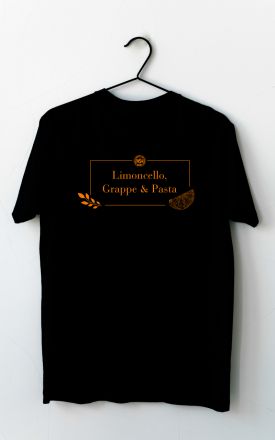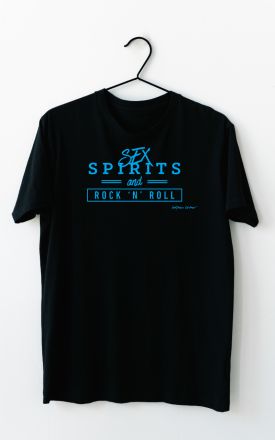
Table of Contens
- Outline
- Why Scampi Crudo with grape distillate works
- Understanding the ingredient: what is scampi?
- Equipment and mise en place
- Step-by-step: preparing scampi for crudo
- Plating and seasoning: the three essential elements
- Stepwise plating example
- Why the muscatel spray matters
- Pairings and serving ideas
- Troubleshooting and safety
- Variations and creative tweaks
- Storage and leftovers
- FAQ
- Final thoughts
- Credits
- Additional resources
Scampi Crudo with grape distillate: A Minimalist Adriatic Recipe
Scampi, also called Norway lobster or langoustine, are small relatives of the lobster. Their size and tender meat make them ideal for raw preparations when they are handled with the utmost freshness. Scampi Crudo with grape distillate relies on top-quality ingredients and a confident, light touch: the seafood must speak for itself, with salt and oil as supporting actors and the grape distillate as the final aromatic punctuation.
Outline
- Why this recipe works: philosophy and flavor
- Understanding the ingredient: scampi and its origin
- Equipment and mise en place
- Step-by-step: preparing scampi for crudo
- Dressing and finishing: salt, olive oil, and muscatel perfume
- Serving suggestions and pairings
- Troubleshooting, safety, and variations
- FAQ
- Conclusion and final tips
Why Scampi Crudo with grape distillate works
The guiding principle behind Scampi Crudo with grape distillate is minimalism: showcase a single primary ingredient and accentuate it with two complementary elements. The meat of scampi is sweet, delicate, and slightly briny. It needs a clean seasoning that enhances rather than masks. Sea salt brings out natural sugars, a top-quality extra virgin olive oil adds silk and a savory fruitiness, and the grape distillate—specifically a Yellow Muscatel spray—lends a fleeting aromatic lift that evokes citrus, orange blossom, and muscat perfume without overwhelming the seafood.
When executed properly, Scampi Crudo with grape distillate delivers a layered sensory experience: the first impression is pure, saline sweetness; the second is the silky mouthfeel from the oil; and the final note is the ephemeral floral-citrus perfume from the grape distillate. The technique is simple, but it requires attention to freshness, temperature, and restraint.
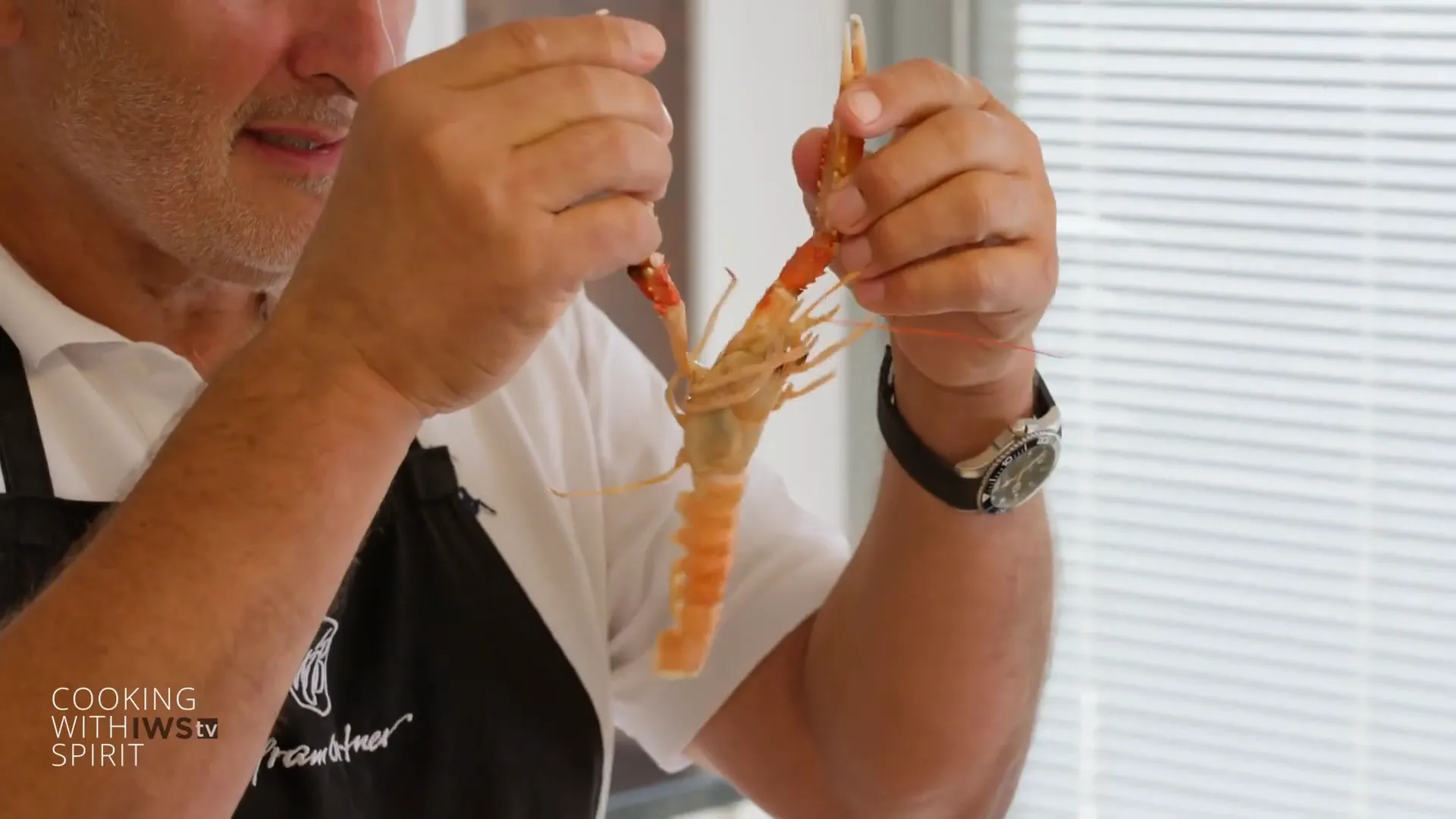
Understanding the ingredient: what is scampi?
Scampi (Nephrops norvegicus and related species) are small crustaceans often referred to as Norway lobster, langoustine, or “campi” in some regional dialects. They resemble small lobsters with slender bodies and delicate claws. Compared to common shrimp, scampi are more flavorful and have a firmer, more succulent texture.
Origin matters. In the Adriatic, especially around the islands of Krk and the Kvarner Bay near Rijeka, scampi and rock lobsters are highly prized. This region produces some of the most celebrated specimens due to cold, clean currents and a favorable seafloor habitat. For Scampi Crudo with grape distillate, raw-grade, sushi-quality scampi from a trusted source is essential.
Key qualities to look for
- Bright, translucent meat with no off-odors.
- Firm flesh that springs back when pressed.
- Clear, shiny shells if purchased whole.
- Well-chilled at purchase and transported home on ice.

Equipment and mise en place
There’s no need for elaborate equipment for Scampi Crudo with grape distillate, but a few practical items will make the process safe and comfortable:
- Sharp paring knife: for precise head removal and any trimming.
- Kitchen paper: to pat the meat dry.
- Chilled plates: to keep the meat cold while serving.
- Atomizer/spray bottle: to gently mist the grape distillate (Yellow Muscatel).
- Small spoon or tweezers: to remove the intestinal thread if necessary.
Having the wine or spirit in a spray bottle is not a gimmick: a measured mist avoids saturating the scampi with alcohol while delivering a fine aromatic veil that lifts the dish. For Scampi Crudo with grape distillate, this precision is what separates a great bite from an overdone one.
Step-by-step: preparing scampi for crudo
Prepare everything in advance and work with chilled seafood. The steps below explain how to get perfect scampi meat ready for the plate.
- Keep the scampi cold: Refrigerate until the moment of preparation. Cold slows bacterial growth and keeps flesh firm.
- Remove the head: With a twisting motion, separate the head from the body. The head can be reserved for stock if desired, but for raw service it’s discarded or set aside for another use.
- Detach the tail from the shell: Hold the tail and gently separate it from the lower shell. You want to free the meat while keeping it intact.
- Open the shell: Press along the side of the shell to crack it slightly, then peel it back. The shell can resist at first; sometimes a few firm presses are necessary. If unsure, practice with grilled scampi first to get familiar with the technique.
- Remove the intestinal tract: Inspect the back of each tail for the dark vein (intestinal thread). Use a paring knife or tweezers to remove it cleanly.
- Pat the meat dry: Gently dry the meat with kitchen paper to remove excess moisture so that salt and oil adhere properly.
- Slice or leave whole: Depending on preference, leave the tail whole or slice into medallions. Whole tails are elegant and maintain texture; slices are easier to bite through for some diners.
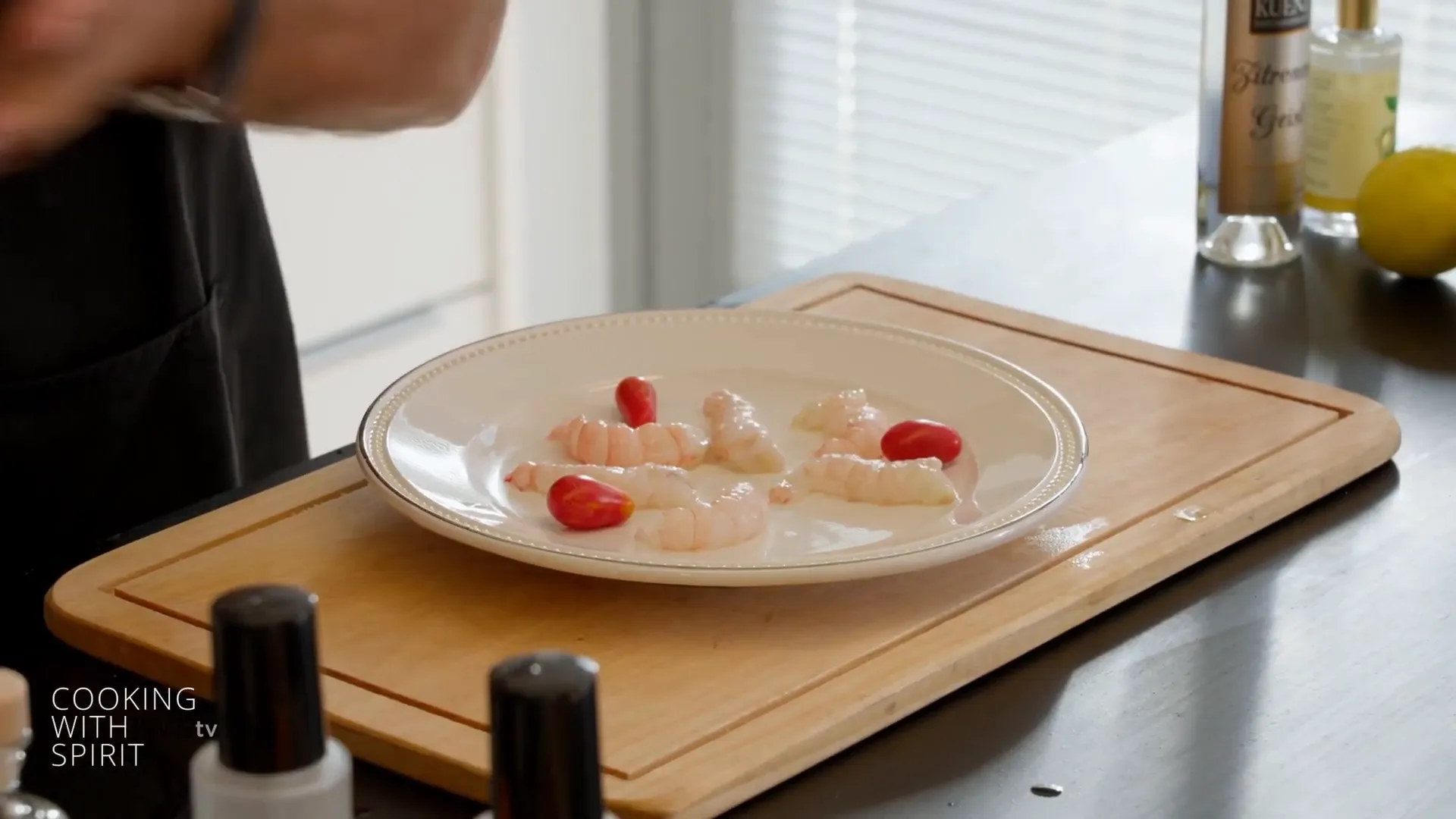
Plating and seasoning: the three essential elements
Scampi Crudo with grape distillate is disciplined: salt, oil, and a spritz of muscatel distillate. Each element is chosen to enhance a specific quality of the scampi.
Salt
Use a high-quality sea salt—fleur de sel or a flaked finishing salt works best. Sprinkle a very small amount evenly over the meat. Salt amplifies sweetness and provides a subtle crunch.
Olive oil
Drizzle sparingly with premium extra virgin olive oil. In the demonstration, Istrian olive oil was used for its fruit-forward, slightly peppery character. The oil should add gloss and a rounded mouthfeel without drowning the scampi. For two servings (6–8 scampi), 2–3 tablespoons in total is usually sufficient—think sheen, not pool.
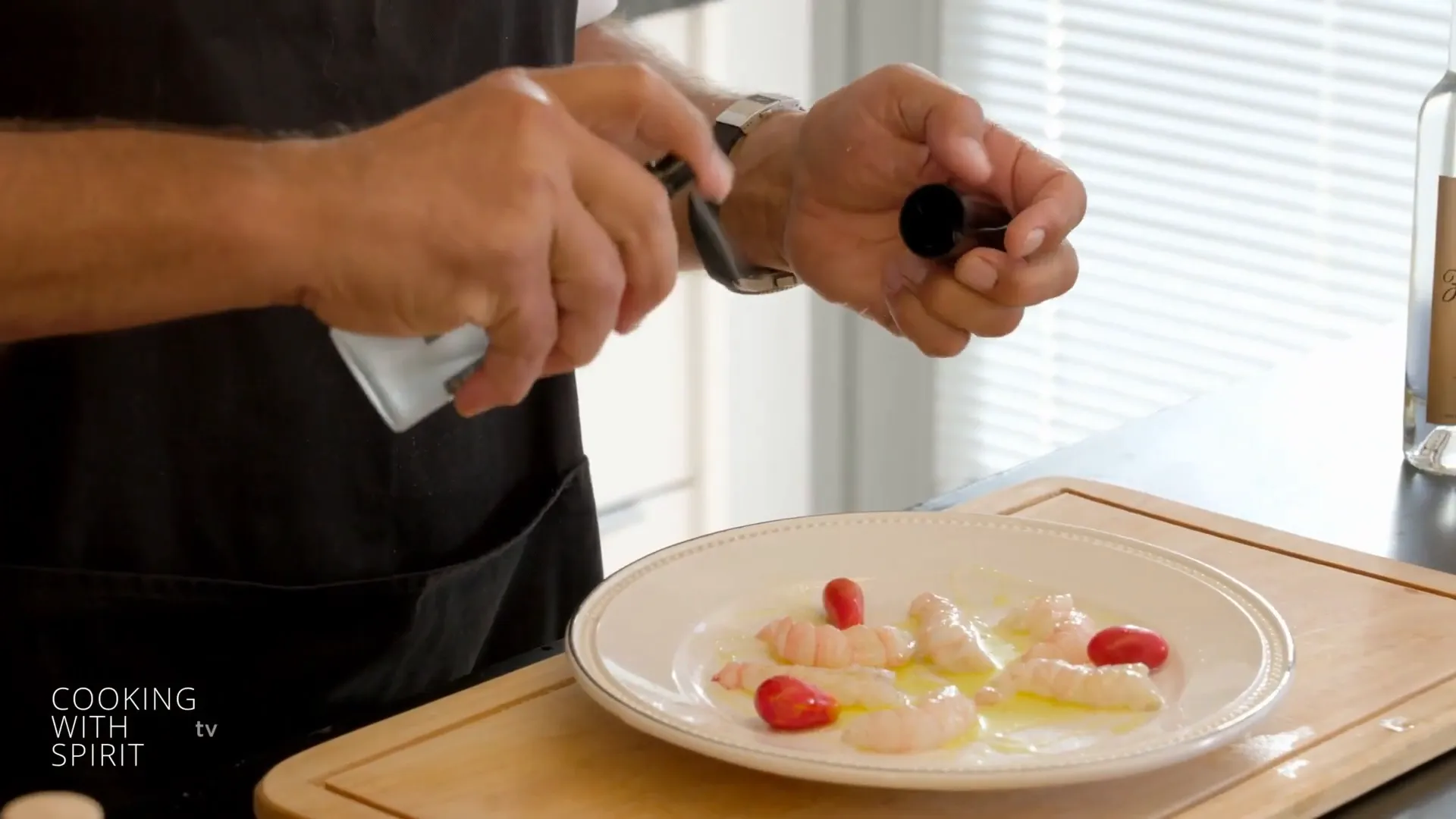
Grape distillate (Yellow Muscatel)
This is the signature flourish. The Yellow Muscatel brandy—an intensely perfumed distillate of the Yellow Muscatel grape—is applied in 1–2 fine mists from a distance of 20–30 cm. The spray should perfume the scampi with floral and citrus notes: orange blossom, ripe citrus peel, and a hint of muscat aroma. It should be perceptible but not dominant.
Use a clean atomizer or spray bottle. Never pour the spirit directly; a spray ensures a diffused aroma and avoids altering texture or flavor intensity. The effect is akin to applying a perfume: ephemeral but memorable.
Stepwise plating example
- Arrange 3–4 scampi tails per plate on chilled plates.
- Lightly sprinkle sea salt over each tail.
- Drizzle a modest ribbon of Istrian extra virgin olive oil.
- From 20–30 cm, give 1–2 fine mists of Yellow Muscatel grape distillate.
- Serve immediately. Optionally finish with a tiny flourish of citrus zest or a few drops of tomato water for a touch of acidity.

Why the muscatel spray matters
The muscatel distillate is not a replacement for wine pairing; it’s an aromatic tool. Spraying conveys volatile aromatics that hit the olfactory receptors first, which primes the palate for the delicate sweetness and saline nuance of the scampi. The distillate’s orange and floral notes echo the natural citrus-like top notes of fresh scampi and tie the dish together.
Important: use the distillate sparingly. The intention is perfume—an accent—rather than an alcoholic seasoning. When used correctly, Scampi Crudo with grape distillate feels refined and balanced.
Pairings and serving ideas
Because the dish is so light and aromatic, pairings should be crisp and clean. Consider:
- A dry Yellow Muscatel wine that mirrors the perfume of the distillate.
- A clean, mineral white wine from the Adriatic coast or a dry sparkling wine to cut through richness.
- Simple accompaniments like thin slices of crusty bread or a raw vegetable crudo salad—nothing that masks the scampi.
For a multi-course meal, serve Scampi Crudo with grape distillate as a bright, immediate first course that awakens the palate.
Troubleshooting and safety
Working with raw seafood requires respect for hygiene and temperature. A few common issues and their fixes:
- Problem: Tough texture. Solution: Ensure the scampi are handled cold and are truly fresh. Overcooking is not a factor here, but older scampi become tough and lose sweetness.
- Problem: Shell is hard to remove. Solution: Apply a firm press along the side of the shell; practice on grilled scampi if needed. Patience helps—repeating the press and peel will free the meat without tearing it.
- Problem: Excess alcohol aroma. Solution: Spray from 20–30 cm and limit to a light mist. The atomizer diffuses aroma; avoid direct pouring.
- Problem: Fishy or off smell. Solution: Do not use. Dispose of suspect scampi. When in doubt, source different seafood. Freshness is non-negotiable.
Variations and creative tweaks
Scampi Crudo with grape distillate is elegant because it is spare, but a few small variations can be used to tailor the dish:
- Tomato water: a few drops add a gentle acidity that contrasts sweetness without shouting.
- Citrus zest: micrograms of lemon or orange zest echo the muscatel’s citrus profile.
- Herbal whisper: a single microleaf of basil or a tiny sliver of chive for visual contrast, used sparingly.
- Alternative spirits: experiment with a very light-handed distillate of other aromatic grapes, but be cautious—Yellow Muscatel is prized for its perfect marriage with scampi.
Storage and leftovers
When made as a crudo, Scampi Crudo with grape distillate should be consumed immediately. Raw seafood does not store well once dressed. If scampi meat must be stored raw, keep it tightly covered and chilled for no more than 24 hours, and only if it was purchased at sushi-grade freshness. For leftovers of cooked scampi, refrigerate promptly and consume within 24–48 hours.
Final thoughts
Scampi Crudo with grape distillate is a lesson in restraint: a handful of exceptionally fresh ingredients treated with respect produces an intensely satisfying experience. It proves that technique and ingredient quality trump elaborate preparation. The method is simple—shelled scampi, a whisper of salt, a sheen of olive oil, and a whispering spray of Yellow Muscatel distillate—but the cumulative effect is profound.
As a closing note: practice the shelling technique. The scampi’s delicate meat deserves to be removed cleanly so that the sensuous texture remains intact on the plate. And above all, prioritize freshness. When every element is right, Scampi Crudo with grape distillate becomes not only a dish but a memory of the Adriatic coast in a single bite.
Credits
Recipe and demonstration inspired by Inside World-Spirits TV - Englisch Channel, Wolfram Ortner. This article preserves the minimalistic approach and the essential technique while providing expanded context, troubleshooting tips, and pairing suggestions to help cooks reproduce Scampi Crudo with grape distillate at home.
Additional resources
- Basic guide to sourcing sushi-grade seafood
- How to make tomato water for a subtle acidity
- Choosing and storing extra virgin olive oil
"Less is more: salt + premium olive oil + a fine spirit = pure scampi flavor." — Guiding principle for Scampi Crudo with grape distillate
FAQ - Häufig gestellte Fragen
Yes, but keep portions small and plate just before serving. Scampi Crudo with grape distillate is best delivered immediately after dressing to preserve temperature and aroma.
High-quality extra virgin olive oil with fruity, green notes works best. In the demonstration, Istrian olive oil was used for its regional affinity with Adriatic seafood. Use just enough for a glossy sheen.
Buy from a reputable supplier who labels seafood as sushi- or sashimi-grade. Keep the scampi chilled, transport them on ice, and consume promptly. If you are unsure about the source or freshness, cook the scampi instead of serving them raw.
Scampi are related to shrimp but are distinct species, sometimes called Norway lobster or langoustine. They have a sweeter, more lobster-like flavor and firmer texture. In culinary contexts, scampi is used for dishes that benefit from its more pronounced flavor.
Substitutions are possible but will change the character of the dish. A very light, floral eau-de-vie may work, but avoid heavy spirits or vinegars. A fine mist of a citrus liqueur would be too sweet; for a non-alcoholic option, a tiny spray of citrus blossom water could be experimented with carefully.
For Scampi Crudo with grape distillate, use 1–2 fine mists from an atomizer per plate. The goal is to perfume, not to soak. Spray from 20–30 cm away for a light, even distribution.
Yellow Muscatel grape distillate is a spirit made by distilling the aromatic Yellow Muscat grape. It retains floral and citrus aromatics that are ideal for finishing delicate seafood. In Scampi Crudo with grape distillate, the distillate acts as a perfume rather than a dominant flavoring agent.
Scampi are related to shrimp but are distinct species, sometimes called Norway lobster or langoustine. They have a sweeter, more lobster-like flavor and firmer texture. In culinary contexts, scampi is used for dishes that benefit from its more pronounced flavor.
Sesorisches Wissen Kompakt - IWS.TV Fibel


Brandy de Jerez – Spain’s Unique Brandy



